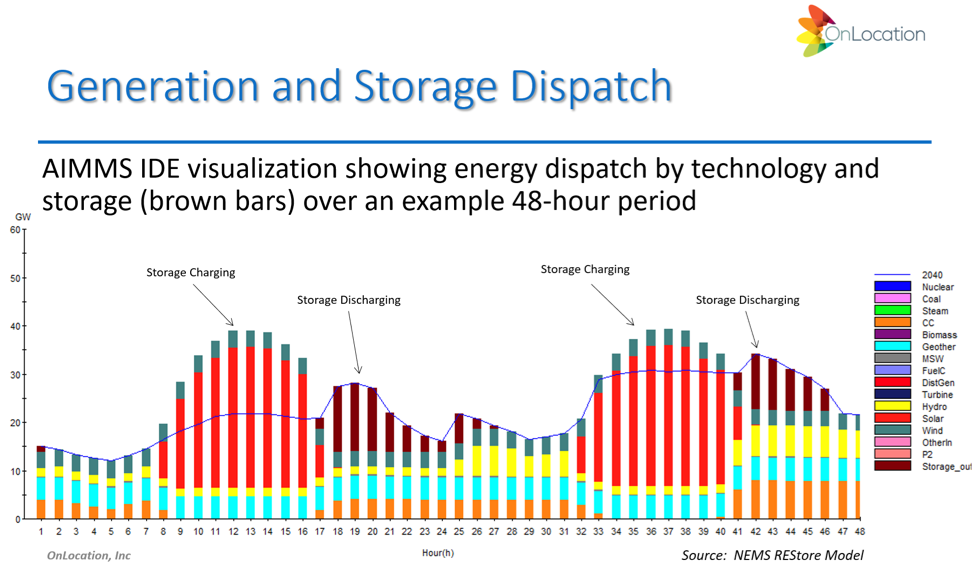OnLocation is an energy consulting company based in the Washington, D.C. area. They have extensive experience using integrated energy modeling to assess the costs and benefits of energy policies and technologies and provide insights into potential implementation challenges. OnLocation’s primary integrated modeling tool is The National Energy Modeling System (NEMS), which is the most trusted integrated energy model used for projections and policy analysis in the United States. Recently, we hosted a webinar to hear about OnLocation’s REStore model, a submodule of NEMS built in AIMMS. REStore represents electricity storage and the temporal pattern of renewable generation. Get the inside story below!
Renewable energy on the rise
According to the U.S. Department of Energy, solar installations in the U.S. have grown 35-fold since 2008. The average cost of solar photovoltaic (PV) panels has dropped nearly 50% since 2014, as well. This growth in renewables is posing new challenges for the electricity market. Unlike most commodities, electricity must be produced as it’s consumed. As more renewable energy sources are added to the grid, the net load to be met by dispatchable generation becomes more variable. For instance, you may produce surplus solar energy at the height of the day, but how do you then meet load during the remaining evening peak hours when solar is no longer available? Storage offers a solution to this problem, but how do you assess the cost implications and determine the required storage capacity needed throughout the year to meet demand at peak times?
Enter REStore
REStore is a Linear Programming (LP) optimization model developed in AIMMS. The model takes regional input data from the Electricity Market Module (EMM) in NEMS, such as:
- Electricity demands
- Generation capacity and operating cost
- Hourly generation profiles for solar and wind capacity
- Monthly factors determining caps for hydroelectric energy
- Storage capacity and discharge rate
- Storage efficiencies
It also takes in data points like ramp up/down costs and rates for fossil generators and penalty costs associated with energy policies. The model then provides information back to the EMM on marginal electricity prices, storage operation hours, utilization hours by plant type, storage arbitrage values, and Variable Renewable Energy (VRE) curtailments.

The output of the model is used to find the minimum cost of dispatch and storage utilization, using both existing capacity and new storage increments. This informs planning and policy decisions surrounding the introduction and optimal use of renewables in the grid. The implications of the model are far-reaching. For instance, as more electric cars enter the market, REStore might also be applied to determine the optimal timing of electric vehicle charging in the future.
Watch the on-demand webinar to get more details about the model.



